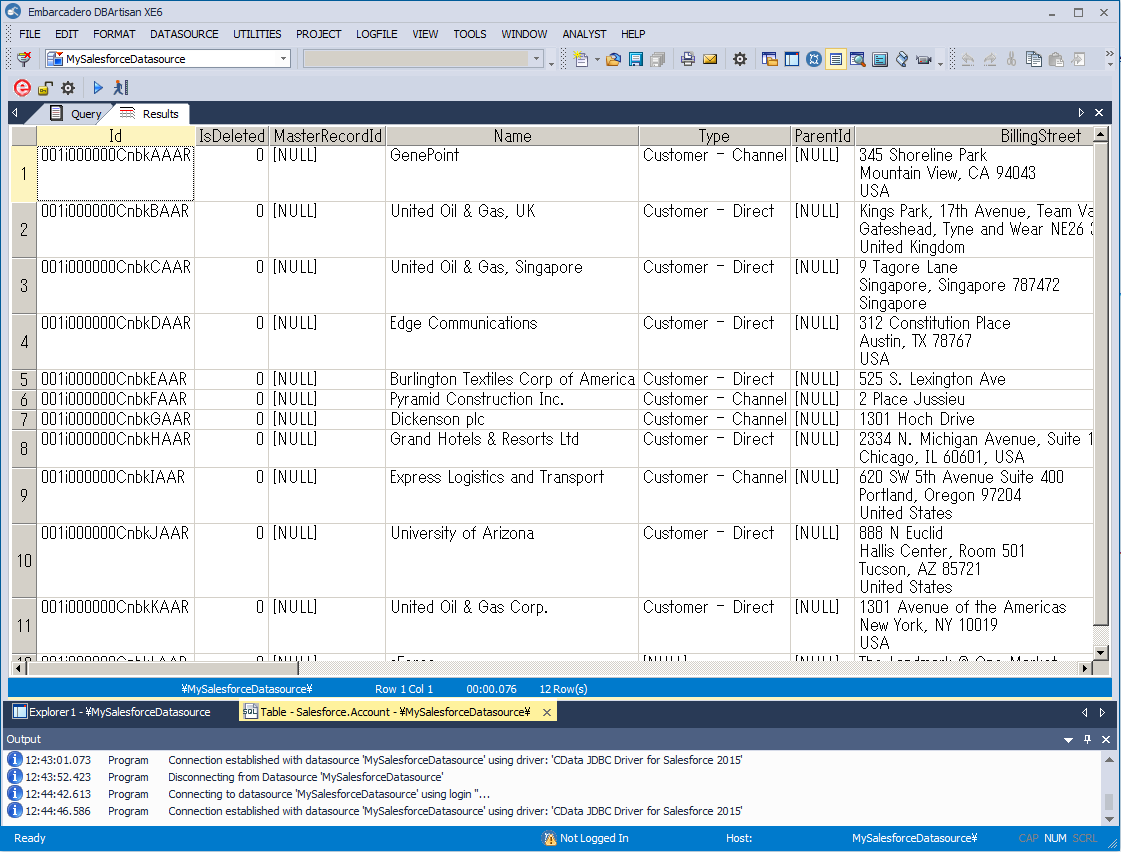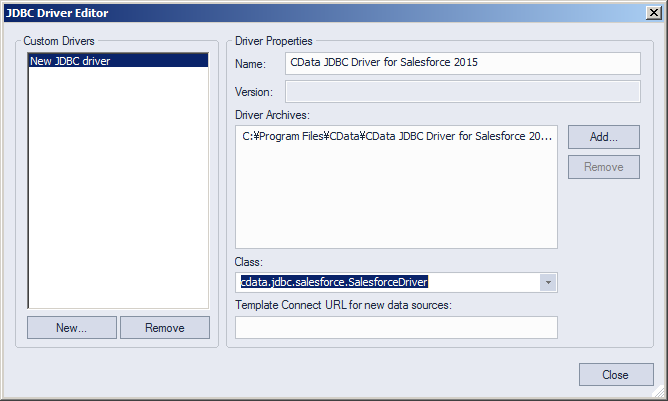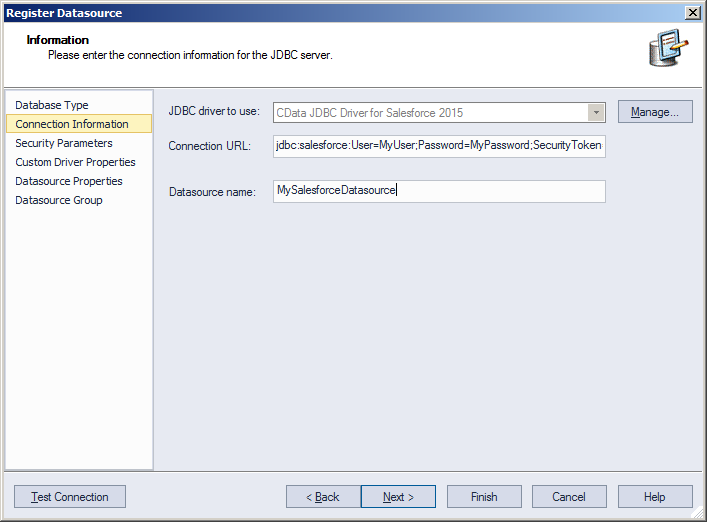Model Context Protocol (MCP) finally gives AI models a way to access the business data needed to make them really useful at work. CData MCP Servers have the depth and performance to make sure AI has access to all of the answers.
Try them now for free →Manage LinkedIn Data in DBArtisan as a JDBC Source
Use wizards in DBArtisan to create a JDBC data source for LinkedIn.
The CData JDBC Driver for LinkedIn seamlessly integrates LinkedIn data into database management tools like DBArtisan by enabling you to access LinkedIn data as a database. This article shows how to create a JDBC source for LinkedIn in DBArtisan. You can then edit data visually and execute standard SQL.
Integrate LinkedIn Data into DBArtisan Projects
Follow the steps below to register LinkedIn data as a database instance in your project:
- In DBArtisan, click Data Source -> Register Datasource.
- Select Generic JDBC.
- Click Manage.
- In the resulting dialog, click New. Enter a name for the driver and click Add. In the resulting dialog, navigate to the driver JAR. The driver JAR is located in the lib subfolder of the installation directory.
![The JDBC driver definition in the Register Datasource wizard. (Salesforce is shown.)]()
-
In the Connection URL box, enter credentials and other required connection properties in the JDBC URL.
LinkedIn uses the OAuth 2 authentication standard. You will need to obtain the OAuthClientId and OAuthClientSecret by registering an app with LinkedIn.
For more information refer to our authentication guide.
Built-in Connection String Designer
For assistance in constructing the JDBC URL, use the connection string designer built into the LinkedIn JDBC Driver. Either double-click the JAR file or execute the jar file from the command-line.
java -jar cdata.jdbc.linkedin.jarFill in the connection properties and copy the connection string to the clipboard.
![Required JDBC connection properties in the Register Datasource wizard. (Salesforce is shown.)]()
Below is a typical connection string:
jdbc:linkedin:OAuthClientId=MyOAuthClientId;OAuthClientSecret=MyOAuthClientSecret;CallbackURL=http://localhost:portNumber;CompanyId=XXXXXXXInitiateOAuth=GETANDREFRESH - Finish the wizard to connect to LinkedIn data. LinkedIn entities are displayed in the Datasource Explorer.
You can now work with LinkedIn data as you work with any other database. See the driver help documentation for more information on the queries supported by the LinkedIn API.




